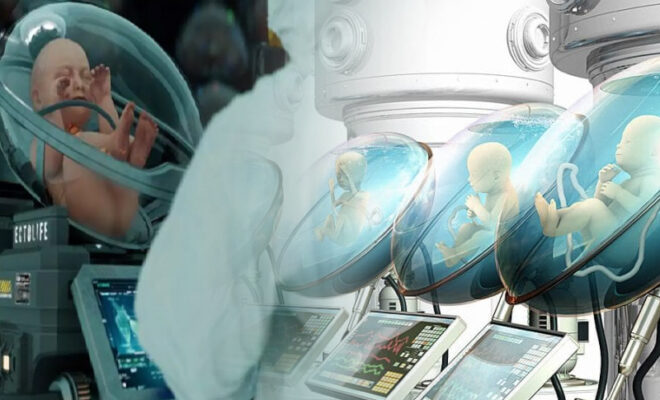Ectolife: The Artificial Womb Facility That Can Grow 30,000 Babies A Year

A scientist has created an artificial womb to carry the pregnancy in a birth pod after the fertilization of the embryo. Parents can design their child by manipulating genes.
Louise Brown, a British woman, became the first IVF-born baby in the world in 1978.
In-Vitro Fertilization (IVF) was when the sperm (of the male) and egg (of the female) were taken from each of their bodies and fertilized in a laboratory.
The womb was then placed into the womb of a female, either the biological mother or surrogate. The baby was then born.
Also Read; 6 Best Health Benefits Of Eating Jaggery In This Winter
The world’s first-ever ‘artificial birth womb factory’ will now be able to deliver a baby up to full term in a pod. This is similar to what you might see in a science-fiction story.
The technology will allow parents to choose the characteristics of their baby (e.g. eye color, height and strength) via a menu.
CRISPR Cas-9 technology, which is well-known around the globe, will be used to edit genes.
This bizarre and insane plan by ECTOLIFE’s biotechnologist Hashem Al-Ghaili, a Berlin-based science communicator and biotechnologist, would allow infertile couples to conceive a child and be the ‘true biological parents’ of their offspring.
Ghaili, EctoLife founder, says that his plan is based upon over fifty years’ worth of pioneering scientific research.
Ghaili states that the EctoLife artificial womb was created to relieve human suffering and decrease the chance of C-sections.
Also Read: Five Immunity Boosting Drinks For Sore Throat
“EctoLife will make premature births and C sections a thing of the distant past with its revolutionary technology.”
EctoLife is claimed to be a safe environment for your baby’s development.
Ghaili states that every pod replicates the conditions found in the mother’s uterus. One building can house up to 30,000 lab-grown children per year.
Ectolife employees and parents can view real-time information on the baby’s developmental progress via a smart digital screen. You can also view the data via an app for your phone.
The pods have sensors that monitor vital signs of the baby and project them onto a screen. This includes heartbeat, temperature and breathing rate.



